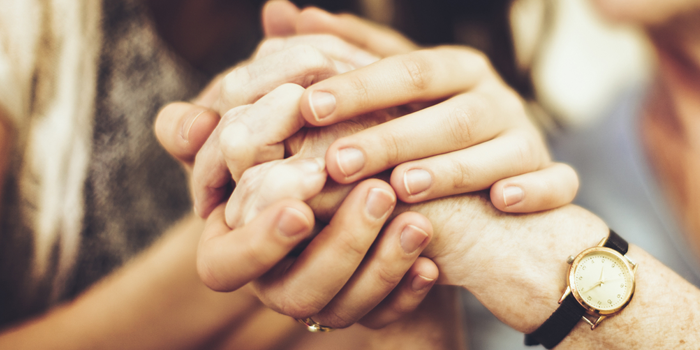No products in the cart.
Uncategorized
The Importance of Touch in Caregiving
Touch is an important part of our wellbeing as it calms us and lets us know that someone cares. This is true from birth right through to old age.
When we reach old age, touch can have a certain healing power. However, many older adults do not experience the feeling of touch on a daily basis, which can lead to (or emphasise) feelings of social isolation and depression.
It’s important that elderly people in our care feel connected and looked after. There are a number of ways to incorporate touch into caregiving to improve the quality of life of someone in your care.
Why Do The Elderly Need Regular Touch?
A lack of human touch can have significant consequences that are both psychological and emotional. Older adults are at risk of a lack of touch, particularly those that are living in long-term aged care, and those living with dementia. Most of the ‘touch’ that these people experience is typically from the caregivers who are assisting them. Even though this touch may be carried out in a gentle and caring way, the older person still associates it with their obligations to carry out routine procedures and tasks for their care.
Older adults need informal, emotional touch that gives them feelings of warmth, security, and comfort.
Why Older Adults Often Do Not Receive Regular Touch
There are a number of reasons why older adults lose the experience of touch as they age:
- Partners Become Busy Caregivers: In many cases, an older adult’s partner will become their primary carer, which can be overwhelming for them. With a never ending list of tasks to carry out as a caregiver, partners may not feel they have enough time to stop and spend time with tender and caring physical touch.
- Partners are Deceased: The elderly adult’s partner may not be assuming a caregiving role, instead they may have already passed away. It is not unusual for an elderly adult to lose a lifetime partner that they would have hugged and kissed every day.
- Alzheimer’s or Dementia: A person living with dementia can find that their senses become easily over-stimulated. Due to this, others may be less physical with them as they are worried that it will result in a negative reaction.
- Senior Depression: Depression is common in older adults, and when this occurs they may become withdrawn from social functions and activities. As people living with depression become less social, they will have less contact with people, and as such, less sense of touch.
The Benefits of Human Touch for the Elderly
Regular, compassionate touch has a number of benefits for the elderly. Physical touch has been reported to:
- Make people live longer and recover quicker from sickness
- Help reduce the possibility of a stress-induced illness
- Balance the nervous system
- Be a positive form of non-verbal communication
- Reduce or relieve pain
- Increase feelings of empathy and being understood
- Benefit the immune system
- Create a feeling of being loved and supported
How to Use the Power of Touch
There are a number of ways for caregivers to incorporate touch into their daily routine. Hugs, embraces, and holding hands are simple ways to increase the wellbeing of an older adult through touch.
A genuine smile, eye contact and a gentle touch can mean a lot to the person in your care. It can completely change their day by imparting positive feelings such as happiness, hope and acceptance. Some of the ways that you can gently touch someone in your care include:
- Touching their arm or hand to show appreciation for something
- Sharing good news with a touch of the hand
- Greeting them with a kiss when you see them
- Greeting them with a prolonged, friendly handshake
- Putting your arms around them to show empathy
- Gently rubbing or massaging an ache or pain that they have
- Offering to do their makeup or brush their hair
- Sitting next to them to read an article together
- Rubbing some lotion into dry hands and arms
- Gently stroking their hands when escorting them somewhere
Compassionate Touch and the Elderly
Touch with compassion can significantly reduce the risk of a number of conditions developing, such as anxiety, depression and agitation. You can learn to give a gentle massage to someone in your care, or pay for a professional if you’re not confident to do it yourself. If you are giving a massage to someone in your care, it which should be gentle, non-invasive, and unhurried. The aim of massage is to touch and gently knead muscles to relieve tension, which will improve the person’s blood flow and circulation. As well, it’s to make a special connection with the person you are caring for. In recent surveys, where compassionate touch has been used, residents have been seen to share the techniques with each other!
It’s important to gauge the person’s mood before attempting to engage physically with them. Try simply having a conversation with them and asking if they would like a massage. It’s important to be guided by them.
If you are interested in practicing touch with someone in your care, the Compassionate Touch® course may be of use to you. Compassionate Touch® combines skilled touch with compassionate presence to enhance quality of life for those and reduce need for medication.


